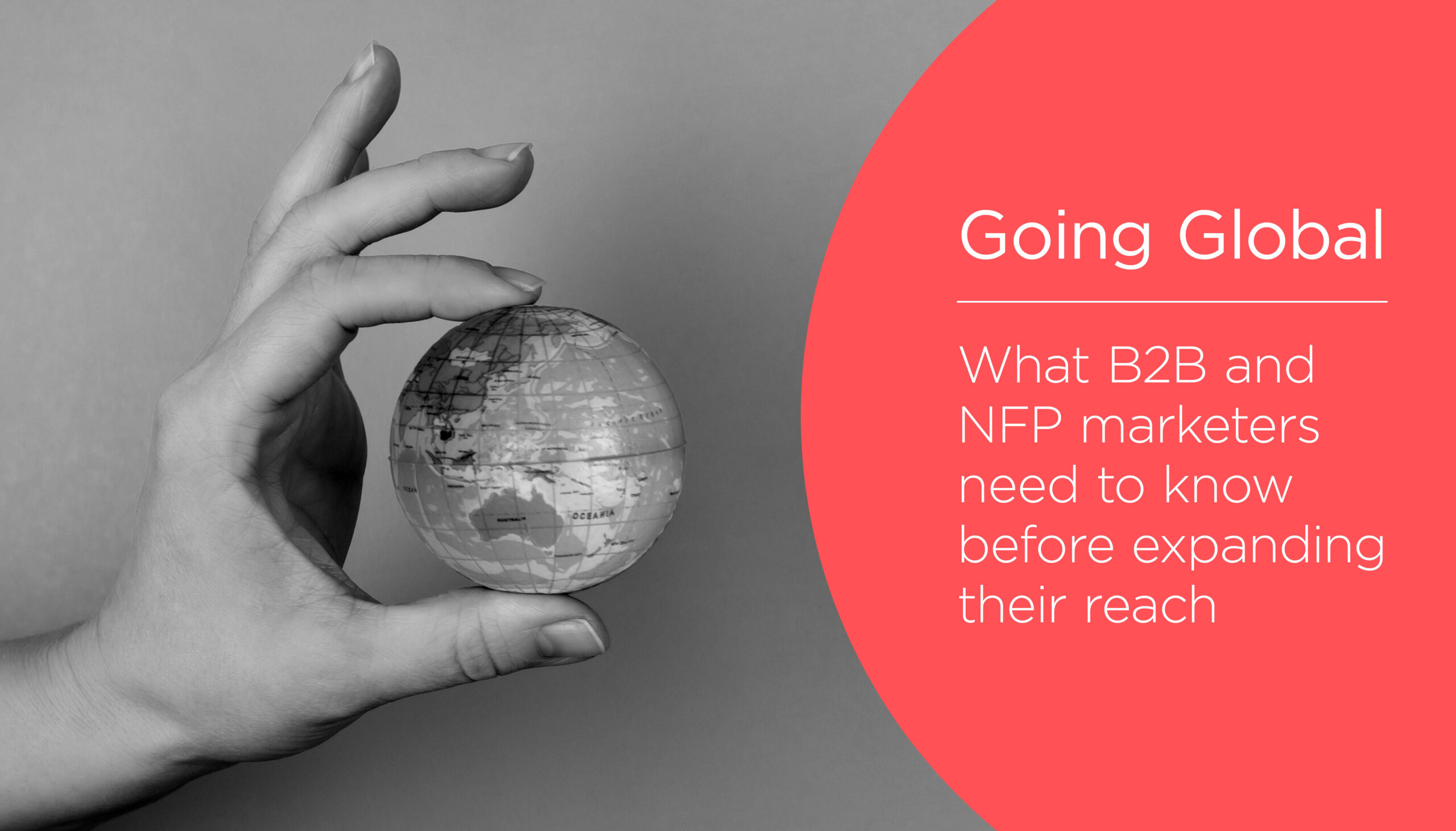In an increasingly interconnected world, business-to-business (B2B) and non-for-profit (NFP) organisations are beginning to realise just how advantageous it is to go global.
Whether the aim is to reach new audiences, build brand awareness, or increase revenue, going global can offer many benefits.
Expanding your organisation’s reach internationally, however, doesn’t come without its challenges.
Before diving straight into developing a global brand strategy, B2B and NFP marketers need to consider the risks involved, and explore the power of localisation.
Considerations for B2B Organisations
Expanding your reach globally is no easy task. In fact, B2Bs should prepare themselves for an uphill climb as they enter into a new market and appeal to different audiences.
New markets are often difficult to access and highly competitive. With the right considerations, however, B2Bs can set themselves up for success.
The number one consideration for B2Bs should be understanding their local market.
Marketers need to consider cultural differences, and shape their campaigns accordingly. The more research is done on specific customs and unique traditions, the more appealing businesses will be to their target audiences.
Another important thing to keep in mind is regional regulations and legal considerations. When it comes to business practices and marketing, different countries and regions have varying laws, and businesses need to make sure their strategies comply with local regulations.
Considerations for NFP Organisations
Thinking locally in a global context is equally important for non-for-profits as it is for B2Bs. Still, there are specific considerations NFPs need to make that can ensure their success.
NFPs are often held to higher standards when it comes to cultural sensitivity than for-profit organisations because non-for-profits often work in more social settings. Their initiatives are frequently framed around improving society, or helping specific communities.
Creating a tailored approach to local audiences and shaping messaging accordingly is essential. A non-for-profit’s marketing strategy should resonate with each target audience.
Further, adapting to the unique needs of each community is crucial. Communities will naturally have different needs, concerns or demands. Addressing those specific concerns will almost certainly build trust and respect among local audiences.
The Risk of a One-Size-Fits-All Approach
One of the biggest risks of a global brand strategy is overlooking important differences between markets. Assuming that what works in one market will work in another can lead to cultural missteps and damage the brand.
AirBnb, for example, made a bad blunder when it initiated its “Floating World” email marketing campaign just as a massive hurricane was passing through Houston, Texas.
Those affected thought the campaign was highly insensitive and immediately took to Twitter to condemn the brand’s ill-timed mistake.
It is important to research and understand the unique needs of each market, and tailor your approach accordingly.
The Benefits of Localised Marketing Efforts
Localised marketing efforts can be highly beneficial for B2Bs and NFPs seeking to connect with specific target audiences in different regions.
By tailoring marketing messages and strategies to the specific needs and interests of local communities, organisations can build stronger relationships with customers and gain a deeper understanding of the local market.
Leveraging local knowledge and expertise can also help you develop culturally relevant and appropriate marketing messages that resonate with the local audience.
Defining Your Brand Identity for a Global Audience
In order to successfully define your brand identity for a global audience, you must strike a balance between consistency and adaptability.
To establish a consistent brand identity, it's important to identify key elements that define your brand, such as your values, tone of voice, and visual identity, and ensure that these are applied consistently across all touchpoints.
However, it's also important to take into account cultural differences and nuances, and adapt your brand identity accordingly. When developing messaging that resonates with a diverse audience, it's important to consider factors such as language, geography, cultural references, and local values.
Hungry Jack’s: A Case Study
Hungry Jack’s is a great example of successful localised branding.
In 1971, Burger King corporate decided to rebrand their concept in Australia upon discovering that the “Burger King” trademark was already taken.
At first, corporate thought the only difference between Hungry Jacks, and the rest of its global brand would be the name.
This changed though after realising, with the input of Hungry Jack’s founder Jack Cowin, that tailoring the brand’s services to their Australian audience would yield stronger localised brand identity.
Now, almost all menu items differ from its American counterpart, and the brand’s messaging differs greatly. Hungry Jack’s still plays its 1950’s theme song in stores, and fashions its look on the vintage original 1950’s aesthetic.
Adapting Your Marketing for Global Markets
Adapting your marketing for global markets requires a comprehensive strategy.
First, take the time to conduct research and analyse cultural, economic, and social factors that influence consumer behaviour in each region.
Second, evaluate the effectiveness of different marketing channels in different markets.
Identifying the talent and expertise you need to execute a global marketing campaign is also crucial. You'll need a team that has experience working in different regions and is knowledgeable about the local culture and regulations.
Finally, building relationships with local partners and vendors will help you navigate new markets more smoothly.
Final Thoughts
Going global can offer many benefits to B2B and NFP organisations.
However, each organisation should carefully consider their global marketing strategy before forging ahead full-force.
One key consideration is a carefully-crafted localisation strategy. By considering the specific needs of each region and community, you’ll create more appeal and build trust among your target audience.
There are many nuances to building a global brand and expanding your reach internationally.
To learn more, book a free 30 minute consultation today with Make It Happen!

